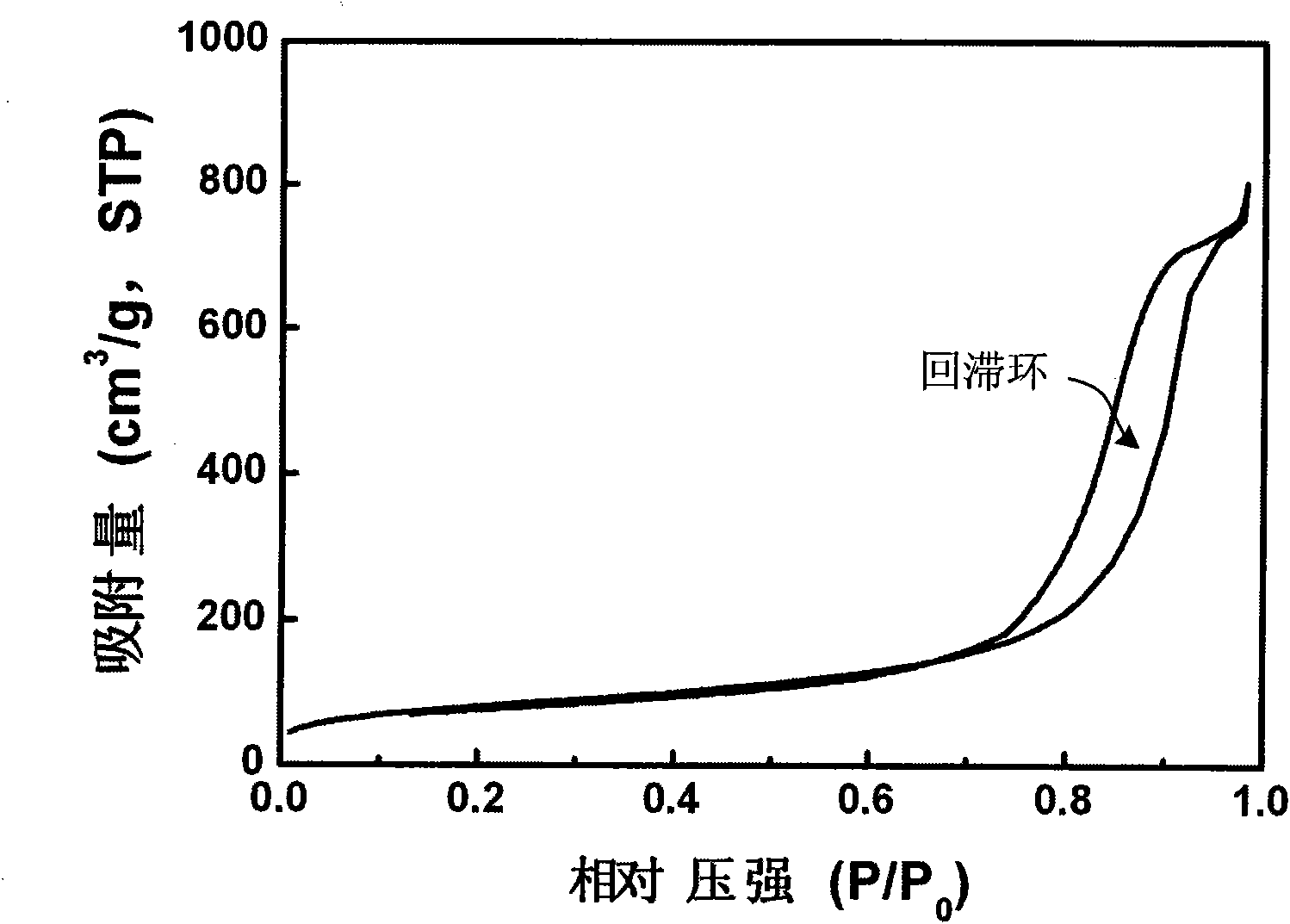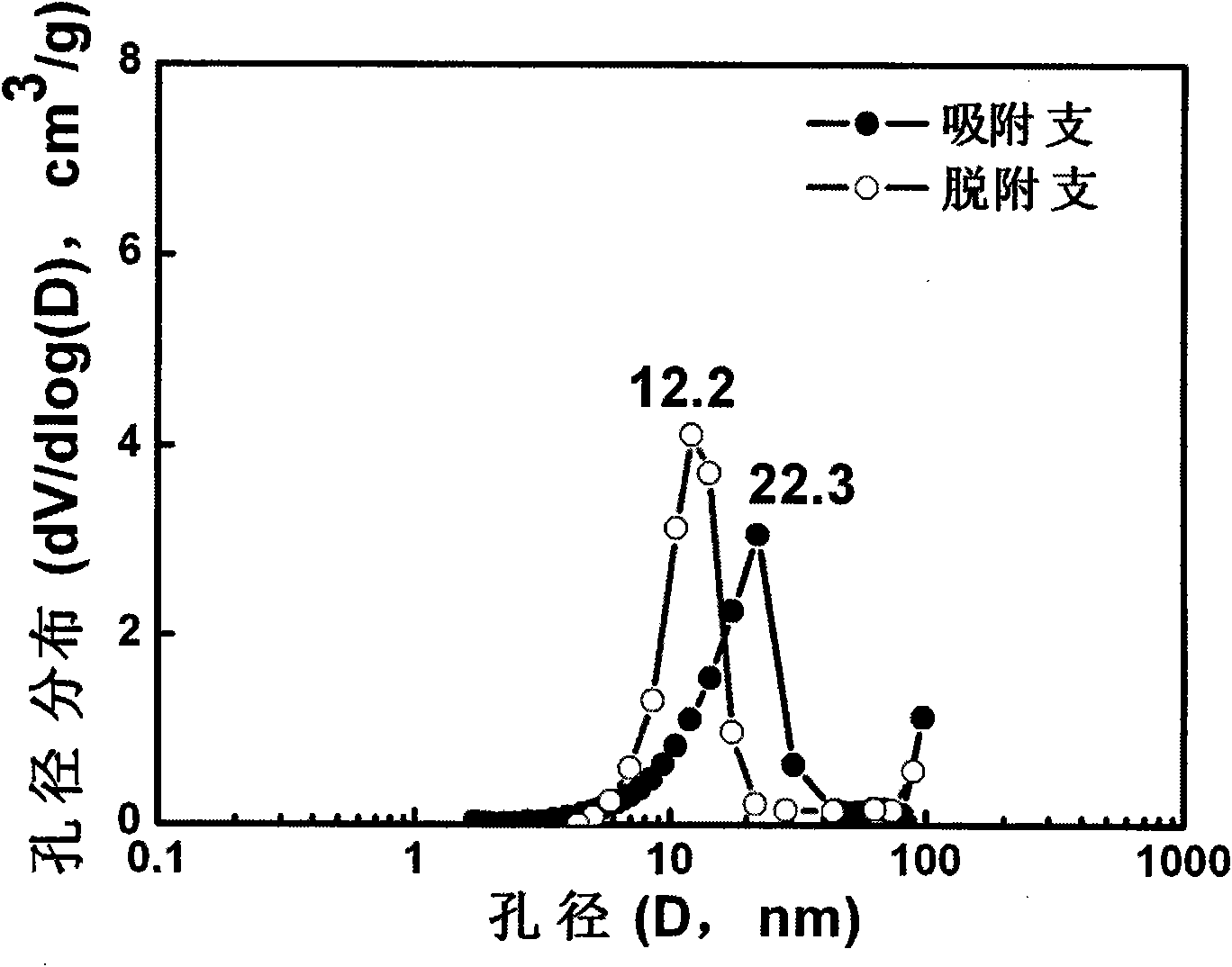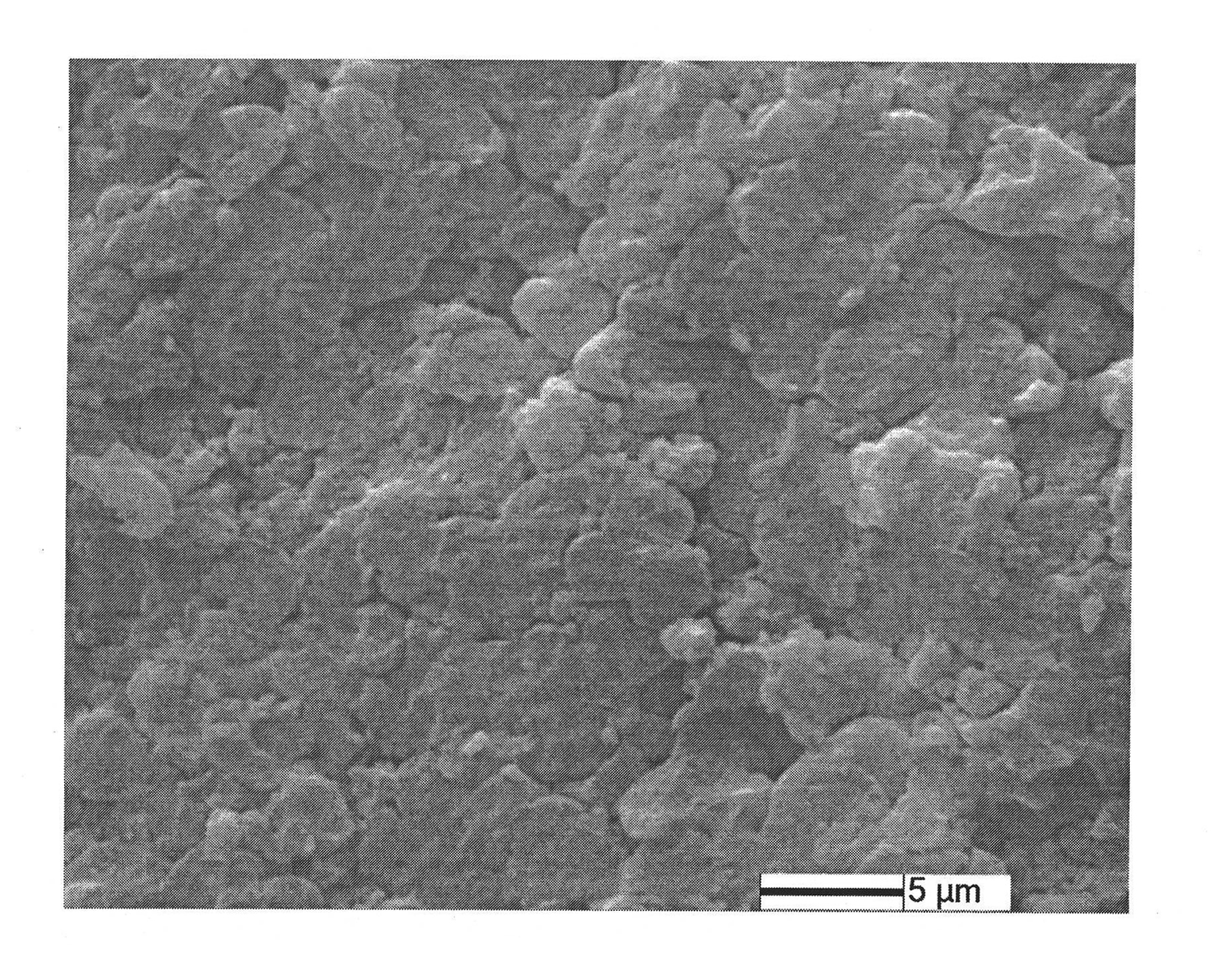Silica-based porous bulk for heat insulating material and coating-dry pressing preparation method thereof
A technology of silica and thermal insulation materials, which is applied in heat exchange materials, chemical instruments and methods, and other chemical processes, etc., can solve problems such as poor hydrothermal stability of aerogels, and achieve widened application fields and simple operation process. , the effect of simple equipment
- Summary
- Abstract
- Description
- Claims
- Application Information
AI Technical Summary
Problems solved by technology
Method used
Image
Examples
Embodiment 1
[0052] Example 1: Surface coated with Al 2 o 3 silica-based porous blocks
[0053] Step 1. Preparation of porous silica powder
[0054] (A) In a water bath at 38°C, the nonionic surfactant P123 (EO 30 PO 70 EO 30 ) was dissolved in hydrochloric acid (HCl) with a molar concentration of 1.6 mol / L, and stirred at a speed of 900 rpm for 60 minutes to form solution A;
[0055] (B) In a water bath at 38°C, add trimethylbenzene (TMB) to solution A to form solution B;
[0056] (C) In a water bath at 38°C, add tetraethyl orthosilicate (TEOS) to solution B, and stir at a speed of 900 rpm for 20 hours to form suspension A;
[0057] (D) After transferring the suspension A to a hydrothermal kettle, place it in an oven, keep it warm at 140°C for 24 hours, then cool it down to 25°C naturally with the oven, take it out, and obtain the suspension B;
[0058] (E) Transfer the suspension B to a Buchner funnel, and filter under 0.01MPa vacuum for 20 minutes to obtain a white powder;
[...
Embodiment 2
[0077] Example 2: Surface coated TiO 2 silica-based porous blocks
[0078] Step 1. Preparation of porous silica powder
[0079] (A) In a water bath at 40°C, the nonionic surfactant P123 (EO 30 PO 70 EO 30 ) was dissolved in hydrochloric acid (HCl) with a molar concentration of 1.6 mol / L, and stirred at a speed of 500 rpm for 120 minutes to form solution A;
[0080] (B) in a water bath at 40°C, add trimethylbenzene (TMB) to solution A to form solution B;
[0081] (C) In a water bath at 40°C, add tetraethyl orthosilicate (TEOS) to solution B, and stir at a speed of 500 rpm for 30 hours to form suspension A;
[0082] (D) After transferring the suspension A to a hydrothermal kettle, place it in an oven, keep it warm at a temperature of 90°C for 90 hours, then cool it down to 35°C naturally with the oven, take it out, and obtain a suspension B;
[0083] (E) Transfer the suspension B to a Buchner funnel, and filter under vacuum at 0.005MPa for 10 minutes to obtain a white powd...
Embodiment 3
[0097] Example 3: Surface coated with Al 2 o 3 silica-based porous blocks
[0098] Step 1. Preparation of porous silica powder
[0099] (A) In a water bath at 36°C, the nonionic surfactant P123 (EO 30 PO 70 EO 30 ) was dissolved in hydrochloric acid (HCl) with a molar concentration of 1.6 mol / L, and stirred at a speed of 750 rpm for 100 minutes to form solution A;
[0100] (B) In a water bath at 36°C, add trimethylbenzene (TMB) to solution A to form solution B;
[0101] (C) Add tetraethyl orthosilicate (TEOS) to solution B in a water bath at 36°C, and stir at a speed of 750 rpm for 24 hours to form suspension A;
[0102] (D) After transferring the suspension A to a hydrothermal kettle, place it in an oven, keep it at a temperature of 120°C for 48 hours, then cool it down to 30°C naturally with the oven, take it out, and obtain a suspension B;
[0103] (E) Transfer the suspension B to a Buchner funnel, and filter it under a vacuum condition of 0.02MPa for 30 minutes to...
PUM
| Property | Measurement | Unit |
|---|---|---|
| pore size | aaaaa | aaaaa |
| compressive strength | aaaaa | aaaaa |
| pore size | aaaaa | aaaaa |
Abstract
Description
Claims
Application Information
 Login to View More
Login to View More - R&D
- Intellectual Property
- Life Sciences
- Materials
- Tech Scout
- Unparalleled Data Quality
- Higher Quality Content
- 60% Fewer Hallucinations
Browse by: Latest US Patents, China's latest patents, Technical Efficacy Thesaurus, Application Domain, Technology Topic, Popular Technical Reports.
© 2025 PatSnap. All rights reserved.Legal|Privacy policy|Modern Slavery Act Transparency Statement|Sitemap|About US| Contact US: help@patsnap.com



